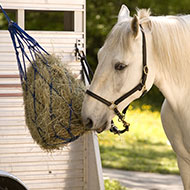One in 10 dog owners don’t know stress signs, study finds
The Kennel Club urges more awareness of dog body language.
The Kennel Club is encouraging dog owners to learn the signs of stress and fear in dogs, after research revealed that one in 10 dog owners could not recognise anxiety in dogs’ body language.
This is despite 72 per cent of the 2,460 dog owners surveyed claiming that they could identify fear and happiness in their dogs.
Fewer than half of the dog owners were able to identify the most well-known body signals of fear, such as the dog’s tail being between their legs or the stiffening of their body.
The Kennel Club consider this to be a cause for concern which may cause stressful situations to escalate, putting humans and dogs at risk.
The statistics have prompted The Kennel Club to issue a safety warning, urging dog owners to increase their knowledge of the signs of stress in dogs.
The welfare organisation has released a list of warning signs that a dog may be stressed, in an effort to improve awareness:
- Appearing tense, and having a stiff body
- Tail tucked between their legs, or held firmly upright
- Looking overly alert – with wide, whitened eyes, licking of lips, and yawning
- Some dogs may growl as a quick way to signify stress.
The survey revealed that 88 per cent did not know to look for yawning, 82 per cent were unaware that licking lips was a stress signal and 65 per cent did not know about staring, wide eyes.
As 28 per cent believed their dog could act ‘unpredictably’, The Kennel Club hope that increased awareness may improve the chances of safe interactions and divert dangerous situations.
The organisation is particularly concerned about interactions with children, with one in five dog owners who are parents not discussing the early warning signals with their children.
Bill Lambert, spokesperson for The Kennel Club, said: “It's alarming that so many owners are simply unaware of how a dog can show signs of stress or fear, while, on the contrary, how many falsely believe they understand their dog’s body language, which can be gravely dangerous in escalating situations.
“Given this, it’s unsurprising that one in four say that their dog can behave unpredictably. Not being able to recognise when your dog is frightened or stressed can have serious consequences and we are extremely concerned about this worrying knowledge gap.”
Image © Shutterstock






 The BSAVA has opened submissions for the BSAVA Clinical Research Abstracts 2026.
The BSAVA has opened submissions for the BSAVA Clinical Research Abstracts 2026.
